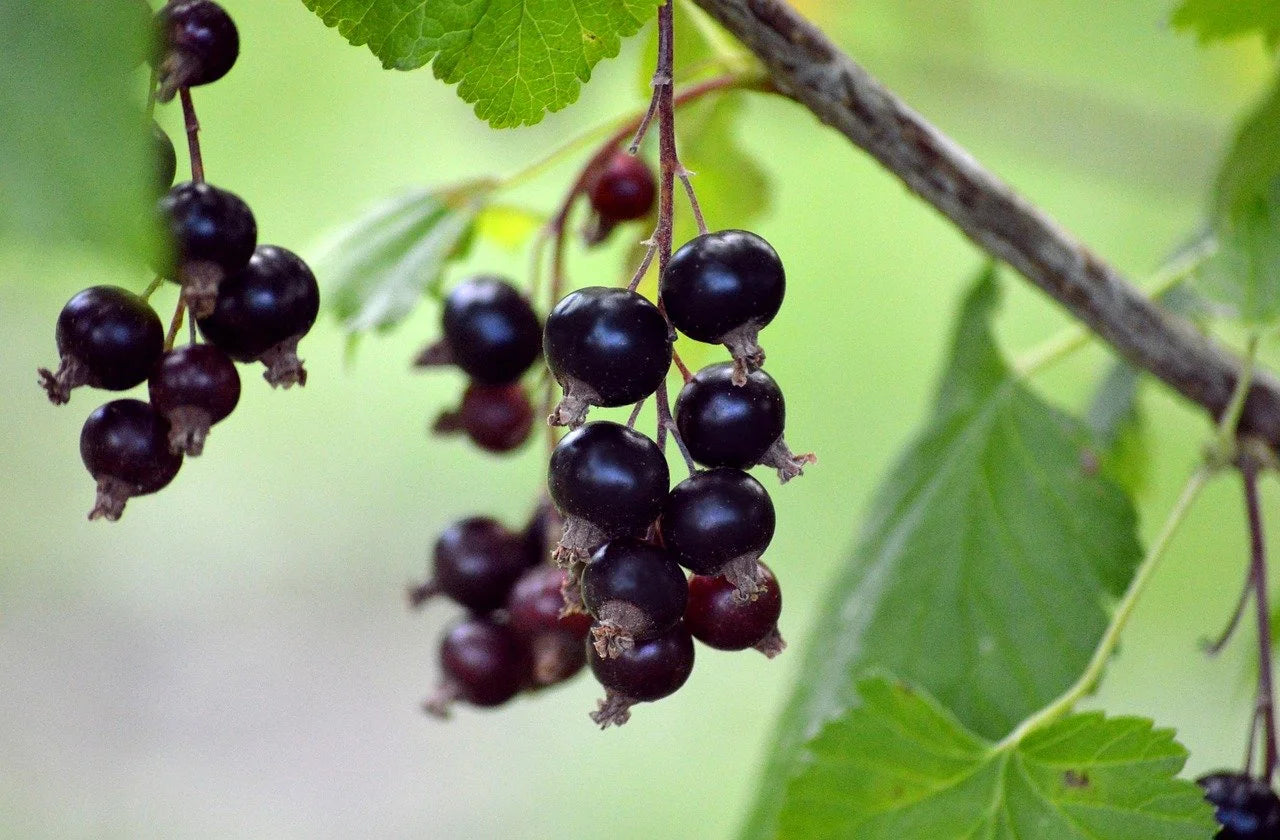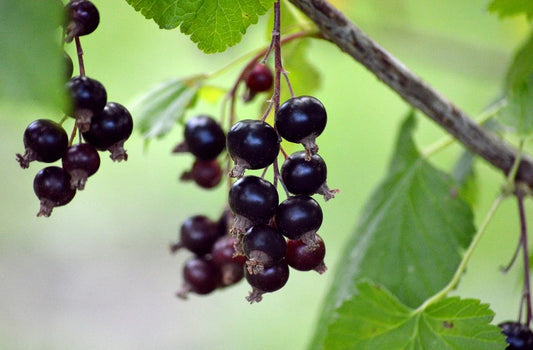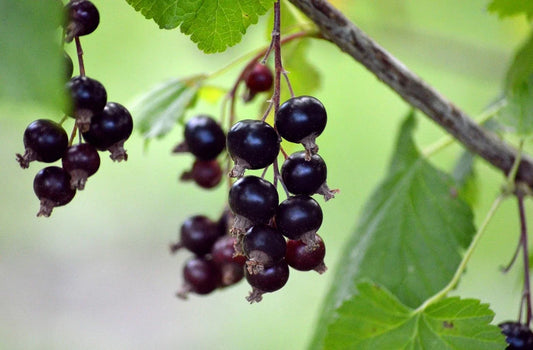-
Delivery from 10 plants within 15 days FR/ EU / CH
Delivery Terms -
Wholesale Supplier of Small Fruit Plants
About Us -
Quality Small Fruit Plants
Technical itinerary for small fruits -
Secure payment
Our Payment Terms
Blackcurrant Plant Cosworld Cross Organic - Box of 24 9cm pots
Blackcurrant Plant Cosworld Cross Organic - Box of 24 9cm pots
Price € excluding VAT per unit excluding transport. Our prices are based on volume. We offer you the best option based on your needs.
Couldn't load pickup availability
 Buy now and get it delivered when you're ready to plant - Add your desired date to your quote request
Buy now and get it delivered when you're ready to plant - Add your desired date to your quote request
 Delivery from 10 plants within 15 days FR/ EU / CH
Delivery from 10 plants within 15 days FR/ EU / CH
These small fruit plants for professionals are certified organic AB
Buying professional organic berry plants from AB allows you to produce organically. Fruits can be sold organically.
When to Plant / When to Harvest Blackcurrants?
Do you want to grow blackcurrants but don't know when to plant them? Do you want to know when you'll harvest them? Consult our Blackcurrant Planting and Harvesting Calendar
View full details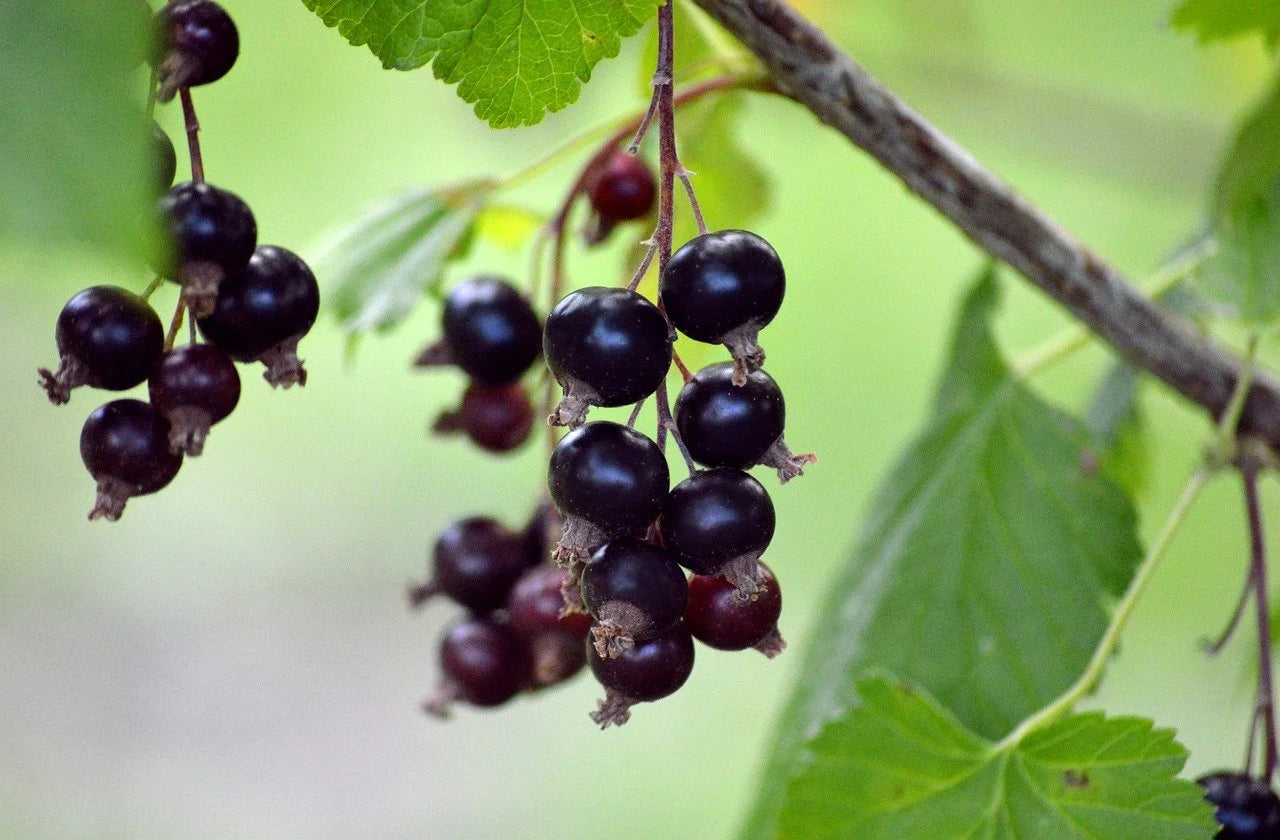
Cosworld Cross Blackcurrant Plant at producer prices for professional market gardeners
Technical sheet of the Blackcurrant variety Cosworld Cross
- Fruit flesh color: Black (information deduced from skin color)
- Skin color: Dark black
- Size and shape: Large fruits, with an average diameter of 10 to 12 mm. Typical blackcurrant shape (round).
- Tree size: Upright habit, reaching an average height of 1.2 to 1.5 meters.
- Fruit maturity: Early, ripening earlier than Noir de Bourgogne and Andega. Harvest in early July.
- Fruit Flavor: Sweet with a good sugar-acidity balance. Particularly sweet and aromatic flavor. Milder than Noir de Bourgogne. Firm and fleshy, with a Brix level generally between 16 and 18°. Moderate acidity.
- Earliness of the variety: Early.
- Fruiting period Early to mid-July, usually late June to early July.
- Disease Resistance and Storage: Good disease resistance, especially powdery mildew and rust. Average overall susceptibility. Firm fruit. Cold storage: approximately 10 to 14 days (information from our previous conversation).
- Variety yield: Very productive, with yields higher than Noir de Bourgogne. Can reach 3 to 4 kg per adult plant, or approximately 600 kg per 1000 m².
- Is this variety self-fertile? Partially self-fertile. Better production is achieved with pollinators such as Andega or Boskoop Giant.
- Commercial use: Mainly for processing (jams). Also suitable for fresh sale due to its large, sweet fruits. Particularly suited to mild climates.
- Comments: Native to Great Britain (England), discovered in 1920. Latin name: Ribes nigrum 'Cotswold Cross'. Upright and compact habit, with average vigor. Prefers well-drained and not too chalky soils. Partial shade is preferred. Hardiness down to -15°C. The bunches are medium-sized, shorter than those of the Boskoop Giant. It is considered a honey variety, attracting pollinators.
Quick read / the essentials on Cassissier Cosworld Cross
The 'Cosworld Cross' blackcurrant – also known as 'Cotswold Cross' – is a strategic choice for professionals looking for a productive, sweet, and versatile plant. Thanks to its superior-sized fruits, with a sweet and tangy flavor, it is particularly prized for high-end juices, jams, and syrups. But above all, it seduces with its ability to perform both fresh and in processing. As a specialist wholesale supplier of blackcurrant plants , Bairiverse highlights this exceptional English variety, adapted to French temperate zones, through rigorous selection and expert advice.
With an average diameter of 10 to 12 mm and a Brix level reaching 18°, Cosworld Cross fruits outperform many traditional varieties. Their good post-harvest shelf life (up to 14 days in cold storage) makes them a major commercial asset. Buying Cosworld Cross blackcurrant plants allows you to aim for a high yield – up to 8 tonnes/ha – from the 4th year, with a productive lifespan of up to 20 years.
Flowering in mid-April and harvesting in July make this blackcurrant a well-positioned option in the growing calendar. Its upright habit and long, visible bunches facilitate mechanical or manual harvesting. Thanks to a superficial root system, the soil must remain fresh, well-drained and rich. As a wholesale supplier specializing in blackcurrant plants , Bairiverse supports you in every step: selection, planting, nutrition, and plant protection.
With good hardiness (down to -15°C), optimized pollination thanks to the Andega, Géant de Boskoop or Wellington XXX varieties, and adaptation to market requirements, buying Cosworld Cross blackcurrant plants from Bairiverse means investing in performance, durability and taste.
A specialist wholesale supplier of blackcurrant plants , Bairiverse offers you this high-potential variety in a comprehensive range dedicated to small fruit professionals in France.
Origin and generalities
The blackcurrant Cosworld Cross (sometimes spelled Cotswold Cross ) is an English variety resulting from a cross dating back to 1920. Its botanical name is Ribes nigrum 'Cotswold Cross' . This cultivar is known for its high productivity , large fruit size and sweet flavor , making it a strategic choice for industrial processing as well as for direct sale.
Fruit characteristics
The Cosworld Cross produces berries of a larger size , with an average diameter of 10 to 12 mm , significantly larger than those of the Noir de Bourgogne. The skin is dark black , the flesh firm and juicy , with a juice content estimated at between 65% and 75% of the fruit weight . The Brix level is high, between 16° and 18° , which indicates a high sugar content.
Its flavor is very fruity, sweet and tangy , less acidic than Andega and sweeter than Noir de Bourgogne. The fruit is aromatic and pleasant on the palate. It is particularly suitable for processing (juices, syrups, jams, liqueurs, pastries) but can also be eaten fresh , in fruit salads or for direct sale.
Post-harvest storage is good : the fruits can be stored for 10 to 14 days in a cold room at 0-2°C with 90-95% humidity.
Plant characteristics
Cosworld Cross is an upright, compact shrub , reaching 1.2 to 1.5 meters in height at maturity, with a similar width. It has medium to strong vigor and a shallow root system , concentrated in the top 20 to 40 cm of soil. This type of system requires well-drained soil and regular watering , especially during growth and fruiting.
Flowering occurs around mid-April , and harvesting takes place in July , generally early to mid-July . Budding is early , which makes it sensitive to late frosts .
This is a non-remontant variety , with only one harvest per year. Harvesting is easy , thanks to long, open and clearly visible bunches on the plant.
Yield and agronomic performance
The Cosworld Cross is very productive . An adult plant can produce between 2 and 4 kg per year , with an optimal yield of 6 to 8 tonnes per hectare from the 4th or 5th year. On an area of 1000 m², you can expect around 600 kg of fruit , with a planting density of around 350 plants .
Significant production begins between 2 and 3 years after planting, for a productive lifespan estimated at 15 to 20 years .
Cultural requirements
Cosworld Cross prefers heavy, fresh, deep, humus-rich soils with a pH between 6.0 and 7.0 . It is slightly tolerant of limestone , but excessively dry soils should be avoided. It is moderately drought-resistant and requires 20 to 30 liters of water per plant per week during the growing season, divided into 2 to 3 waterings.
The ideal exposure is partial shade in hot regions and full sun elsewhere . An east-west orientation is recommended to optimize sunlight.
Sensitivities and resistances
Cosworld Cross shows moderate disease resistance , with good rust resistance. However, it is moderately susceptible to powdery mildew , which requires appropriate monitoring and preventative treatments in at-risk areas. No specific data are available regarding pests.
Hardiness is good , with cold resistance down to -15°C , making it suitable for most temperate zones in France.
Pollination
Cosworld Cross is partially self-fertile , but requires pollinators to optimize production . The varieties Andega , Boskoop Giant , Baldwin and Wellington XXX are recommended to accompany this variety.
In addition, Cosworld Cross is a honey-producing variety , appreciated by bees, which encourages cross-pollination.
Planting, pruning and training
The recommended planting period is from October to March , avoiding periods of frost. Autumn planting is preferable for better root recovery.
Annual pruning is essential , between September and February, to promote aeration, vigor and fruiting.
A balanced fertilization plan is recommended: application of decomposed manure before planting, then splitting the nitrogen, phosphorus and potassium applications at bud break and after harvest, with a trace element supplement every 2-3 years .
Conclusion
Cosworld Cross is a strategic variety for blackcurrant professionals due to its high yield potential , its large fruit with a very sweet taste , and its versatility in processing and fresh production . Adapted to French temperate zones, it nevertheless requires special attention in terms of drainage, watering and protection against powdery mildew . Thanks to its high productivity and exceptional flavor , it represents an excellent option for diversifying a commercial or industrial range .
To summarize: Cassissier Cosworld Cross
In conclusion, the Cosworld Cross blackcurrant stands out as an essential reference for blackcurrant producers looking for performance and consistency. Its superior size, juicy flesh with a high sugar content (up to 18° Brix), balanced flavor, and remarkable productivity (up to 8 tons per hectare) make it a variety perfectly suited to direct sales and processing. Thanks to its good post-harvest performance and its taste appeal, buying Cosworld Cross blackcurrant plants helps meet the growing demands of the small fruit market.
As a specialist wholesale supplier of blackcurrant plants , Bairiverse recommends this variety to market gardeners and arborists wishing to optimize their production over the long term. Easy to train thanks to its upright habit, the Cosworld Cross offers excellent accessibility of the bunches, ideal for manual or semi-mechanized harvests. Particular attention must be paid to irrigation, soil management and prevention against powdery mildew to ensure optimal development.
Compatibility with other pollinating varieties (Boskoop Giant, Wellington XXX, etc.) and its mid-April flowering provide good synchronization for effective fertilization. Its hardiness down to -15°C and its estimated productive lifespan of 15-20 years further reinforce its interest for stable and profitable farms. Buying Cosworld Cross blackcurrant plants from Bairiverse means choosing a trusted partner, a specialist in small fruits, capable of providing technical advice, availability and quality.
Bairiverse, a specialist wholesale supplier of blackcurrant plants , is committed to supporting French producers with certified, healthy plants that are adapted to local soil and climate conditions. To diversify your fruit offering with a high-value variety, buying Cosworld Cross blackcurrant plants is a wise and sustainable investment.
-
Blackcurrant Plant Cosworld Cross Organic - Box of 24 9cm pots
Regular price €2,99 EURRegular priceUnit price / per -
Blackcurrant Cosworld Cross Organic Plant - 77-piece 3.5cm plate
Regular price €2,99 EURRegular priceUnit price / per -
CASSISSIER Plant Cosworld Cross Organic - Box of 10 Pots 1.5L
Regular price €4,29 EURRegular priceUnit price / per
Additional / Useful information:
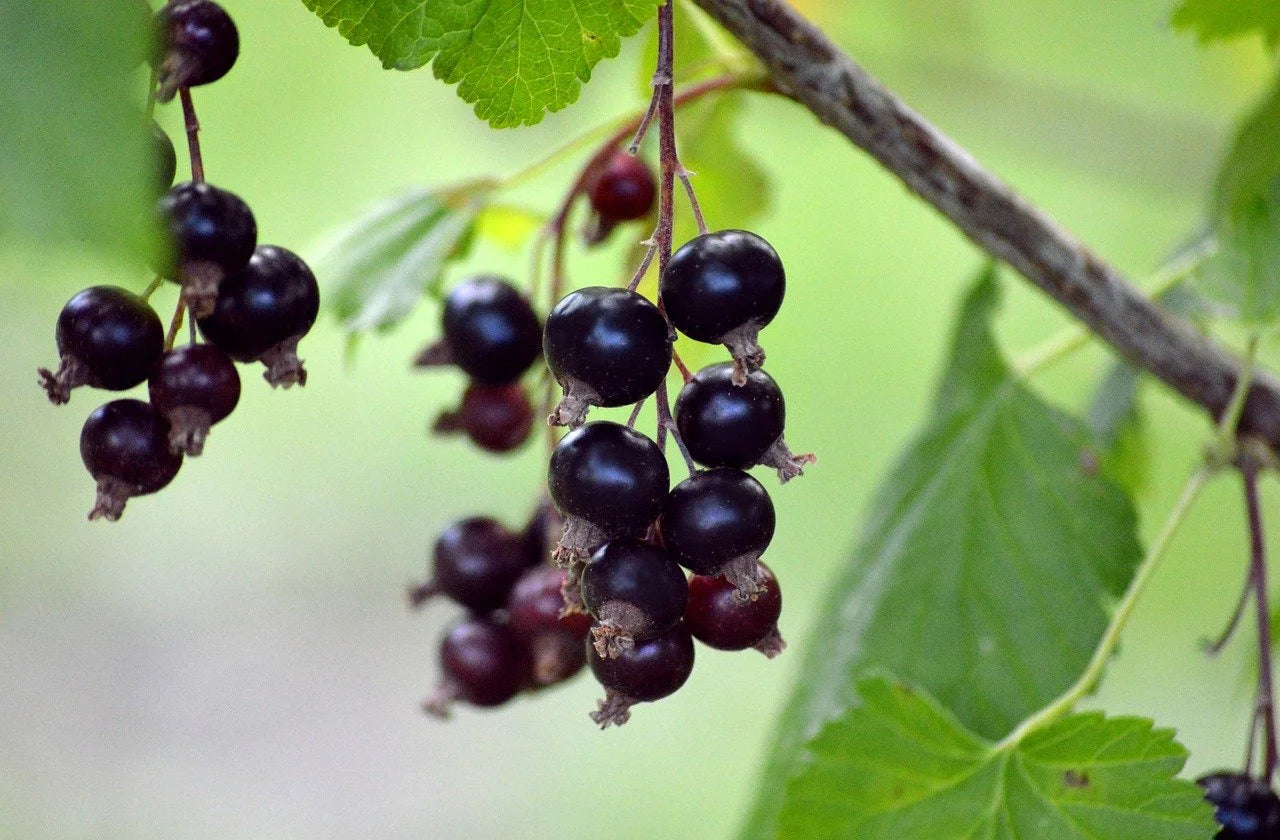
Which variety of blackcurrant should you choose? Characteristics and uses of blackcurrants
How to choose your blackcurrant variety?
Do you want to plant blackcurrant bushes on your plot but don't know which blackcurrant variety to choose? This blackcurrant variety guide lists the main varieties along with their characteristics and uses. For farm sales, supermarket sales, or processing? There's something for everyone.
If you are looking for another variety of Blackcurrant , do not hesitate to contact us: contact us
Our ranges of Blackcurrants:
Organic Blackcurrant and Gooseberry Range for Professionals
Conventional Blackcurrant and Gooseberry Range for Professionals
Blackcurrant Variety Guides:
| Variety | Color of the Fruits |
Remontante | Precocity | Productivity | Fruit Size / Shape | Disease Resistance / Hardiness | Fruiting Period | Taste | Self-fertile |
|---|---|---|---|---|---|---|---|---|---|
| Andega | Black | Non-Rising | Mid-Late | High yield | Large fruits | Powdery mildew tolerant | July to August | Firm, aromatic flesh, few seeds | Self-fertile. Produces abundant pollen. |
| Arno | Dark blue | Non-Rising | Early | Classic | Large fruits | Resistant to powdery mildew | June | Sweet flavor | Self-fertile |
| Bigno | Black | Non-Rising | Season | Average Yield | Big Fruits | Resistant to powdery mildew | End of June to beginning of July | Slightly acidic. Used in freezing or for its buds in medicine. | |
| Blackdown | Dark black | Non-Rising | Mid-Late | Good performance | Classic | Vigorous, adapts to all regions. Very good disease resistance. | End of July | Withstands cooking without bursting, perfect for processing | Self-fertile |
| Black Burgundy | Black | Non-Rising | Late | Fairly low yield | Average | Susceptible to powdery mildew | Mid-July | Perfect for processing into alcohol. Firm. Great aromatic richness. | Self-sterile. Requires pollinator such as Andega or Boskoop's Giant |
| Royal of Naples | Dark Blue to Black | Non-Rising | Late | Average | Quite small | Little susceptible to powdery mildew | Mid-July | Paired with Noir de Bourgogne for liqueur, very tangy | Self-sterile. Pollinated by Blackdow |
| Tradimel | Black | Non-Rising | Season | Very good productivity | Quite big | Susceptible to powdery mildew | July | Strong acidity, leaf can be used for herbal tea | Self-fertile |
| Boskoop Giant | Glossy black | Non-Rising | Early | Excellent performance | Large sweet fruits | Very susceptible to powdery mildew and anthracnose | End of June to beginning of July | Mild flavor, sweet and juicy pulp | Self-sterile. Pollinator of Noir de Bourgogne, must be pollinated by Andega |
| Ben Alder | Dark black | Non-Rising | Season | Very high yield, widely used on large plots for processing into wine | Small to medium sized berries, upright habit | Good resistance to mildew. Very hardy, good resistance to cold. Remains attached for a short period. | July to August | Perfect variety for juices and wines | Self-fertile but better fruiting if crossed |
| Ben Connan | Dark black | Non-Rising | Mid-Late | Abundant production (up to 3.5KG per plant at maturity) | Large berries. Medium-long stem. | Very disease resistant, one of the hardiest varieties | Mid-July to Mid-August | Perfect variety for berry juice, excellent flavor | Self-fertile but better fruiting if crossed |
| Ben Lomond | Dark black | Non-Rising | Mid-Late | Very abundant production of large berries | Very large fruits. Upright and compact bush shape. | Very resistant to frost and powdery mildew | Mid-July to Mid-August | Delicious and sweet | Self-fertile but better fruiting if crossed |
| Ben Nevis | Dark black | Non-Rising | Mid-Late | Very high yield. Only slightly lower than Ben Lomond but easier to pick. | Large, fragrant fruits. Very upright and vigorous bush. | Resistant to major diseases. Hardy | Mid-July to Mid-August (just before Ben Lomond) | Excellent flavor. The fruits are suitable for all uses. | Self-fertile but better fruiting if crossed |
| Ben Sarek | Dark black | Non-Rising | Mid-Early | Very large harvest volume. Scottish variety that offers the highest yield (by quite a distance). The yield potential is exceptional. | Large berries | Very tolerant of frost and cold. The only drawback is that the branch can break under the weight of the fruit. | Mid-June | Excellent flavor. Suitable for processing and direct sale. | Self-fertile but better fruiting if crossed |
| Big Ben | Glossy black | Non-Rising | Season | High yield. Large harvest, up to 4.5 kg per bush. | Fruit 2X larger than average (2.9G), making it one of the varieties with the largest fruits. Equivalent to Chandler for Blueberries | Resistant to mildew and leaf spots | Start to End of July | Very sweet fruit. Ideal for fresh consumption. | Self-fertile but better fruiting if crossed |
| Hedda | Glossy black | Non-Rising | Mid-Early | Offers high yields with ease of maintenance | Spherical, medium-sized fruit | Resistant to all diseases except powdery mildew, to which it is slightly susceptible. Very hardy, lasting down to -34°C. Its hardiness makes it easy to maintain. | Start to mid-July | The sweetest blackcurrant variety. Perfect for juice, jam, or jelly. | Self-fertile but better fruiting if crossed |
| Silvergieter's Black | Dark black | Non-Rising | Early | Fairly decent performance | Medium-sized fruit | Susceptible to mildew and rust | End of June to mid-July | Taste of a mild acidity. Use: raw, jelly, jam, compote, juice, wine, liqueur | Self-fertile but better fruiting if crossed |
| Titania | Glossy black | Non-Rising | Mid-Late | Very productive variety (up to 4KG per plant) | Large bunches but medium-sized berries | Good disease resistance, very cold resistant (down to -29°C) | End of July to mid-August | Very suitable for making jam, juice, pie or wine. Do not pick too early as it will have a very acidic taste. | Self-fertile but better fruiting if crossed |
| Wellington XXX | Glossy black | Non-Rising | Mid-Early | Variety with high productivity | Very large berries with very thick skin | Highly disease resistant. Mildew resistant. Good resistance to high temperatures. Suitable for warm regions. | Mid-June to early July | Very juicy variety. Perfect for making juice or jam. Sweet and fragrant pulp. | Self-fertile but better fruiting if crossed |
Planting and harvesting calendar for blackcurrant bushes
When to plant blackcurrant bushes? When to harvest blackcurrants?
Do you want to start growing blackcurrants but don't know when to plant them? Do you also want to know when you'll be harvesting them?
On this page you will find the planting and harvesting periods for each variety of Blackcurrant.
| Blackcurrant | Jan | Feb | Mar | Apr | May | Jul | Jul | Aug | Sep | Oct | Nov | Dec | Harvest rate / Production yield | |||||||||||||
|---|---|---|---|---|---|---|---|---|---|---|---|---|---|---|---|---|---|---|---|---|---|---|---|---|---|---|
|
Blackcurrant Andega |
Planting | 1 year after planting: small harvest 2 years after planting: first yield |
||||||||||||||||||||||||
| Harvest | ||||||||||||||||||||||||||
|
Blackcurrant Arno |
Planting | 1 year after planting: small harvest 2 years after planting: first yield |
||||||||||||||||||||||||
| Harvest | ||||||||||||||||||||||||||
|
Blackcurrant Bigno |
Planting | 1 year after planting: small harvest 2 years after planting: first yield |
||||||||||||||||||||||||
| Harvest | ||||||||||||||||||||||||||
|
Blackcurrant Blackdown |
Planting | 1 year after planting: small harvest 2 years after planting: first yield |
||||||||||||||||||||||||
| Harvest | ||||||||||||||||||||||||||
|
Blackcurrant from Burgundy |
Planting | 1 year after planting: small harvest 2 years after planting: first yield |
||||||||||||||||||||||||
| Harvest | ||||||||||||||||||||||||||
|
Royal Blackcurrant from Naples |
Planting | 1 year after planting: small harvest 2 years after planting: first yield |
||||||||||||||||||||||||
| Harvest | ||||||||||||||||||||||||||
|
Blackcurrant Tradimel |
Planting | 1 year after planting: small harvest 2 years after planting: first yield |
||||||||||||||||||||||||
| Harvest | ||||||||||||||||||||||||||
|
Giant Blackcurrant Bush from Boskoop |
Planting | 1 year after planting: small harvest 2 years after planting: first yield |
||||||||||||||||||||||||
| Harvest | ||||||||||||||||||||||||||
|
Blackcurrant Ben Alder |
Planting | 1 year after planting: small harvest 2 years after planting: first yield |
||||||||||||||||||||||||
| Harvest | ||||||||||||||||||||||||||
|
Blackcurrant Ben Connan |
Planting | 1 year after planting: small harvest 2 years after planting: first yield |
||||||||||||||||||||||||
| Harvest | ||||||||||||||||||||||||||
|
Blackcurrant Ben Lomond |
Planting | 1 year after planting: small harvest 2 years after planting: first yield |
||||||||||||||||||||||||
| Harvest | ||||||||||||||||||||||||||
|
Blackcurrant Ben Nevis |
Planting | 1 year after planting: small harvest 2 years after planting: first yield |
||||||||||||||||||||||||
| Harvest | ||||||||||||||||||||||||||
|
Blackcurrant Ben Sarek |
Planting | 1 year after planting: small harvest 2 years after planting: first yield |
||||||||||||||||||||||||
| Harvest | ||||||||||||||||||||||||||
|
Blackcurrant Big Ben |
Planting | 1 year after planting: small harvest 2 years after planting: first yield |
||||||||||||||||||||||||
| Harvest | ||||||||||||||||||||||||||
|
Blackcurrant Hedda |
Planting | 1 year after planting: small harvest 2 years after planting: first yield |
||||||||||||||||||||||||
| Harvest | ||||||||||||||||||||||||||
|
Blackcurrant Silvergieter's Black |
Planting | 1 year after planting: small harvest 2 years after planting: first yield |
||||||||||||||||||||||||
| Harvest | ||||||||||||||||||||||||||
|
Blackcurrant Titania |
Planting | 1 year after planting: small harvest 2 years after planting: first yield |
||||||||||||||||||||||||
| Harvest | ||||||||||||||||||||||||||
| Cassissier Wellington XXX | Planting | 1 year after planting: small harvest 2 years after planting: first yield |
||||||||||||||||||||||||
| Harvest | ||||||||||||||||||||||||||
Andega blackcurrant: Planting and harvesting period
The Andega blackcurrant bush is planted from September to November or from February to May. The fruiting/harvesting period for the Andega blackcurrant bush is from July to August. The Andega blackcurrant bush is a non-remontant variety.
Arno Blackcurrant: Planting and Harvesting Period
The Arno blackcurrant bush is planted from September to November or from February to May. The fruiting/harvesting period for the Arno blackcurrant bush is in June. The Arno blackcurrant bush is a non-remontant variety.
Blackcurrant Bigno: Planting and harvesting period
The Bigno blackcurrant bush is planted from September to November or from February to May. The fruiting/harvesting period for the Bigno blackcurrant bush is from late June to early July. The Bigno blackcurrant bush is a non-remontant variety.
Blackdown Blackcurrant: Planting and Harvesting Period
Blackdown blackcurrant is planted from September to November or from February to May. The fruiting/harvesting period for Blackdown blackcurrant is the end of July. Blackdown blackcurrant is a non-remontant variety.
Blackcurrant of Burgundy: Planting and harvesting period
The Black Burgundy Blackcurrant is planted from September to November or from February to May. The fruiting/harvesting period for the Black Burgundy Blackcurrant is mid-July. The Black Burgundy Blackcurrant is a non-remontant variety.
Royal Blackcurrant of Naples: Planting and harvesting period
The Royal Neapolitan Blackcurrant is planted from September to November or from February to May. The fruiting/harvesting period for the Royal Neapolitan Blackcurrant is mid-July. The Royal Neapolitan Blackcurrant is a non-remontant variety.
Tradimel Blackcurrant: Planting and harvesting period
The Tradimel Blackcurrant is planted from September to November or from February to May. The fruiting/harvesting period for the Tradimel Blackcurrant is in July. The Tradimel Blackcurrant is a non-remontant variety.
Boskoop Giant Blackcurrant: Planting and Harvesting Period
The Boskoop Giant Blackcurrant is planted from September to November or from February to May. The fruiting/harvesting period of the Boskoop Giant Blackcurrant is from late June to early July. The Boskoop Giant Blackcurrant is a non-remontant variety.
Ben Alder Blackcurrant: Planting and Harvesting Period
The Ben Alder blackcurrant bush is planted from September to November or from February to May. The fruiting/harvesting period for the Ben Alder blackcurrant bush is from July to August. The Ben Alder blackcurrant bush is a non-remontant variety.
Ben Connan Blackcurrant: Planting and Harvesting Period
The Ben Connan blackcurrant bush is planted from September to November or from February to May. The fruiting/harvesting period for the Ben Connan blackcurrant bush is from mid-July to mid-August. The Ben Connan blackcurrant bush is a non-remontant variety.
Ben Lomond Blackcurrant: Planting and Harvesting Period
Ben Lomond Blackcurrant is planted from September to November or from February to May. The fruiting/harvesting period for Ben Lomond Blackcurrant is from mid-July to mid-August. Ben Lomond Blackcurrant is a non-remontant variety.
Ben Nevis Blackcurrant: Planting and Harvesting Period
Ben Nevis Blackcurrant is planted from September to November or from February to May. The fruiting/harvesting period for Ben Nevis Blackcurrant is from mid-July to mid-August (just before Ben Lomond). Ben Nevis Blackcurrant is a non-remontant variety.
Blackcurrant Ben Sarek: Planting and harvesting period
The Ben Sarek blackcurrant bush is planted from September to November or from February to May. The fruiting/harvesting period for the Ben Sarek blackcurrant bush is mid-June. The Ben Sarek blackcurrant bush is a non-remontant variety.
Big Ben Blackcurrant: Planting and Harvesting Period
The Big Ben blackcurrant bush is planted from September to November or from February to May. The fruiting/harvesting period for the Big Ben blackcurrant bush is from early to late July. The Big Ben blackcurrant bush is a non-remontant variety.
Blackcurrant Hedda: Planting and harvesting period
The Hedda blackcurrant bush is planted from September to November or from February to May. The fruiting/harvesting period for the Hedda blackcurrant bush is from early to mid-July. The Hedda blackcurrant bush is a non-remontant variety.
Blackcurrant Silvergieter's Zwarte: Planting and harvesting period
Silvergieter's Blackcurrant is planted from September to November or from February to May. The fruiting/harvesting period for Silvergieter's Blackcurrant is from late June to mid-July. Silvergieter's Blackcurrant is a non-remontant variety.
Blackcurrant Titania: Planting and harvesting period
The Titania blackcurrant bush is planted from September to November or from February to May. The fruiting/harvesting period for the Titania blackcurrant bush is from late July to mid-August. The Titania blackcurrant bush is a non-remontant variety.
Blackcurrant Wellington XXX: Planting and harvesting period
Blackcurrant Wellington XXX is planted from September to November or from February to May. The fruiting/harvesting period for Blackcurrant Wellington XXX is from mid-June to early July. Blackcurrant Wellington XXX is a non-remontant variety.
French Blackcurrant Market in 2025
In 2025, the blackcurrant market in France will be characterized by contrasting dynamics between conventional and organic sectors, with growing demand for local and sustainable products. Between diversification opportunities, agroecological innovations, and climate challenges, market gardeners can take advantage of this fruit, which has a wealth of diverse uses, while meeting consumer expectations for short supply chains and responsible practices.
Blackcurrant: Presentation and Uses
The blackcurrant (Ribes nigrum) is a fruit shrub of the Grossulariaceae family, native to Europe and northern Asia. It produces blackcurrant, a small black berry with smooth skin and a characteristic, slightly acidic and astringent taste . These fruits, rich in vitamins and antioxidants, are valued for their nutritional and medicinal properties .
In France, the main commercial uses of blackcurrant are:
- The production of liqueurs and crèmes de cassis, particularly for the production of kir
- The making of jams, jellies, syrups and juices
- Use in the food industry for dairy products, confectionery and infant formulas
- Extraction of essential oils for perfumery
- Herbal medicine, using leaves and fruits for their medicinal properties
Evolution of the Cassis Market
The French blackcurrant market has seen mixed developments in recent years. For the conventional market, cultivated areas have increased slightly, mainly in Bourgogne-Franche-Comté, which represents 44% of national production . However, volumes fluctuated due to climatic hazards. Regarding organic production, despite a general downward trend in conversion areas (-28% in 2022), the organic blackcurrant sector held up better thanks to sustained demand. Certified organic areas increased by 8%, reflecting growing consumer interest in local organic products.
- Conventional market: Slight increase in surface area, variable volumes
- Organic market: Growth in certified areas (+8%), decrease in conversions
- Burgundy-Franche-Comté: 44% of national production
- Growing demand for local and organic products
State of the Market 2025
The blackcurrant market in France in 2025 presents distinct trends between conventional and organic. In the conventional sector, there is a stabilization of cultivated areas, with approximately 3,000 hectares dedicated to blackcurrant production . Production volumes fluctuate around 10,000 tonnes per year, influenced by climatic conditions. The organic market, meanwhile, is experiencing moderate but constant growth. Certified organic blackcurrant areas increased by 5% compared to the previous year, reaching nearly 500 hectares . This increase is in line with the general trend in the organic sector, which now represents 10.4% of the French agricultural area . The growing demand for local and organic products is stimulating the development of short supply chains, particularly direct sales, which are seeing a 5% increase in the number of points of sale.
Regions and Terroirs Cassis
The main blackcurrant-producing regions in France are the Loire Valley (40% of national production), Burgundy, the Upper Rhône Valley and the Oise . Burgundy-Franche-Comté, the historic birthplace of blackcurrant, remains a dominant region with 44% of national production .
Each region has specific characteristics that are favorable to blackcurrant cultivation:
- Loire Valley: Temperate climate and well-drained clay-loam soils.
- Burgundy: Continental climate with cold winters, favorable to the dormancy of the blackcurrant bush. Limestone or marl soils, moderately deep and well drained .
- Upper Rhône Valley: Mediterranean to dry continental climate, with arid limestone soils .
- Oise: Degraded oceanic climate, suitable for growing blackcurrants .
Blackcurrant adapts well to cool, continental climates, requiring harsh winters for dormancy and resisting spring frosts .
Blackcurrant Growing Techniques
The main varieties of blackcurrant grown in France are Noir de Bourgogne , Andega , Titania and Ben Lomond . Blackcurrant adapts to a variety of soils but prefers fresh, moist, well-drained clay loams with an optimum pH of 6.0 . It requires a cool climate with harsh winters for dormancy .
Irrigation is crucial, especially during flowering and until flower bud initiation after harvest, with a need of approximately 25 mm of water per week . The recommended planting density is approximately 350 plants per 1000 m² . Average yields vary between 4 to 6 tonnes/ha in conventional farming and 3 to 4 tonnes/ha in organic farming . The blackcurrant bush comes into production after 2 years and can remain productive for more than 20 years with good maintenance .
International Blackcurrant Trade
France is the third largest producer of blackcurrants in Europe, behind Poland and the United Kingdom . However, French production, estimated at around 7,000 tonnes per year, remains modest on a global scale . Poland dominates the market with a production of 131,000 tonnes, followed by Russia which produces around 420,000 tonnes of blackcurrants and gooseberries combined .
French blackcurrant imports come mainly from Poland, which exports around 34,200 tonnes per year, including 1,400 tonnes to France . These imports, often in frozen form, compete directly with national production, particularly for supplying processing industries . This foreign competition puts pressure on the prices and margins of French producers, encouraging the sector to diversify towards products with higher added value such as purees, compotes and juices, which now represent 50% of outlets .
Cassis Market Opportunities
The blackcurrant market in France offers interesting opportunities for producers, both in the conventional and organic sectors. For the conventional market, the diversification of industrial outlets represents significant growth potential. While crème de cassis remains a flagship product, the growing demand for blackcurrant purees, compotes and juices opens up new perspectives . These processed products now represent 50% of outlets, offering greater added value to producers.
In the organic sector, growth is driven by increased consumer demand for local and sustainable products. Aid for organic conversion and support from regional institutions facilitate the transition to this mode of production . The specific demand for organic blackcurrants for the food supplement and natural cosmetics industry also offers high value-added opportunities. Producers can thus benefit from a rapidly expanding niche market, meeting consumer expectations in terms of health and well-being.
Profitability and Financial Aid
Blackcurrant production presents significant differences between conventional and organic methods, both in terms of costs and profitability. For installation, the total cost, including soil preparation, planting and irrigation, is estimated at approximately €8,307 per hectare . Annual maintenance and harvesting vary considerably: from €1,911 to €11,006 per hectare, depending on whether the harvest is mechanical or manual .
In terms of profitability, organic blackcurrants offer interesting prospects. With a planting density of around 350 plants per 1000 m², we can expect a yield of 600 kg and a potential gain of €3,100 for this area . Compared to other crops such as sunflower, whose average annual gross margin excluding aid is between €341/ha and €484/ha, blackcurrant appears to offer better potential profitability.
To support the transition to organic farming and diversification, several aid schemes are available. Conversion aid (CAB) and the Fonds Avenir Bio are interesting options for producers . Additionally, regional programs such as Rural Development Programs (RDPs) can offer additional support, particularly for agroecological practices such as hedge planting . Recently, an additional €15 million was allocated to support organic farms that have suffered economic losses, bringing the total aid to €105 million for 2024 .
Sector Challenges and Risks
The blackcurrant market, both conventional and organic, faces significant challenges. Conventional production faces strong international competition, particularly from Poland, which is putting pressure on prices . Climatic hazards, such as heat waves and violent storms, can cause production losses ranging from 30 to 70% depending on the plot . Phytosanitary risks are also a concern, with a limited number of products approved for crop protection .
For the organic market, the constraints are mainly linked to high production costs, resulting from a cultivation method that is more demanding in terms of labor and input management . Strict organic regulations, although a guarantee of quality, involve regular checks and costly certifications . Additionally, competition is intensifying in the organic market, with supply increasing faster than demand, which can put downward pressure on prices .
Innovations and Market Perspectives
The blackcurrant industry in France is moving towards more sustainable and innovative practices. Research is underway to develop varieties that are more resistant to disease and adapted to climate change . Agroecology is gaining ground, with the integration of cutting-edge technologies such as nanotechnology to optimize crops . Producers are exploring new outlets, particularly in the cosmetics and nutraceutical industries, to diversify their income .
In the medium term, the blackcurrant market is expected to experience moderate but stable growth. Demand for local and organic products will continue to increase, favoring short supply chains . Innovation in processed products, such as purees and functional juices, is expected to boost consumption . However, climate challenges and international competition will remain key factors to monitor for the French sector .
Recommendations for Market Gardeners
Blackcurrant cultivation presents interesting opportunities for French market gardeners, but requires careful consideration before committing to it.
Benefits :
- Growing demand for local and organic products
- Diversification of outlets (food industry, cosmetics, nutraceuticals)
- Good potential profitability, particularly in organic farming
- Adaptability to different French climates and soils
Disadvantages:
- Sensitivity to climatic hazards and phytosanitary risks
- Strong international competition, especially from Poland
- Significant initial investments (planting, irrigation)
- Strict regulations and high costs for organic products
Recommendations:
- Favor varieties adapted to the local terroir and resistant to diseases
- Adopting agroecological practices to strengthen crop resilience
- Diversify outlets by focusing on high added-value processing
- Consider gradual organic conversion to benefit from transition aid
- Integrate into local networks to optimize short-circuit marketing
A thorough analysis of the local market and available resources is essential before embarking on this promising but demanding crop.
Plants and Professional Advice
For market gardeners and professional producers looking for quality blackcurrant plants or advice on planting a plot, two specialist suppliers stand out on the French market:
Bairiverse ( https://plantspetitsfruits.com/ ) offers a wide range of small fruit plants, including blackcurrants, adapted to the needs of professionals . Their offer includes plants in mini-balls, pots and pots, available in organic and conventional versions . Bairiverse stands out for its commercial responsiveness and its fast delivery service within 15 days throughout France .
Econome à Légumes ( https://economealegumes.fr/ ) is a trader in plants and plant material offering competitive prices directly to producers . Their sales team is responsive and can be reached within 48 hours, providing personalized support for the choice of varieties and the establishment of crops . They also offer organic and conventional deliveries throughout France .
These two suppliers not only offer quality plants, but also technical support and advice tailored to blackcurrant plot planting projects, allowing producers to benefit from specialized expertise in the field of small fruits.
FAQ Small Fruits: all our planting tips
Find here all our technical itineraries and cultivation guides to optimize your berry yields
Maximize the production and quality of your crops with our technical itineraries
Whether you're a professional market gardener, nurseryman, or crop manager, accessing best practices and technical itineraries is essential to maximizing the yield and quality of your berry harvests. Through a selection of detailed articles and guides, you can benefit from advice on planting techniques, disease and pest management, as well as methods for preserving and optimizing production.
Explore each guide to get proven solutions, specific to the challenges of your operation, and benefit from the technical support of Bairiverse , your supplier of professional quality berry plants in France.
Raspberry bushes:
Which raspberry variety should you choose? Characteristics and uses of raspberry plants
Raspberry Planting and Harvesting Calendar
Blueberry bushes
Which blueberry variety should you choose? Characteristics and uses of blueberries
Planting and Harvesting Calendar for Blueberries
Definition: Blueberry varieties High Chill, Mid Chill, Low Chill and Rabbiteye
Mulberry trees
Which variety of mulberry should you choose? Characteristics and uses of mulberry trees
Planting and Harvesting Calendar for Mulberry Trees
Gooseberry Bushes
Which Variety of Gooseberries Should You Choose? Characteristics and Uses of Gooseberries
Planting and harvesting calendar for Gooseberries
Gooseberry bushes
Which variety of gooseberry should you choose? Characteristics and uses of gooseberries
Planting and Harvesting Calendar for Gooseberries
Blackcurrant bushes
Which variety of blackcurrant should you choose? Characteristics and uses of blackcurrants

